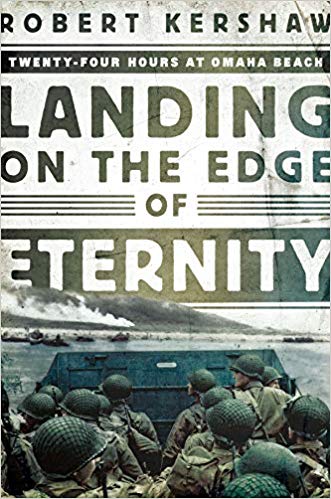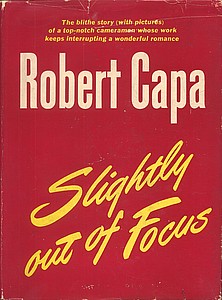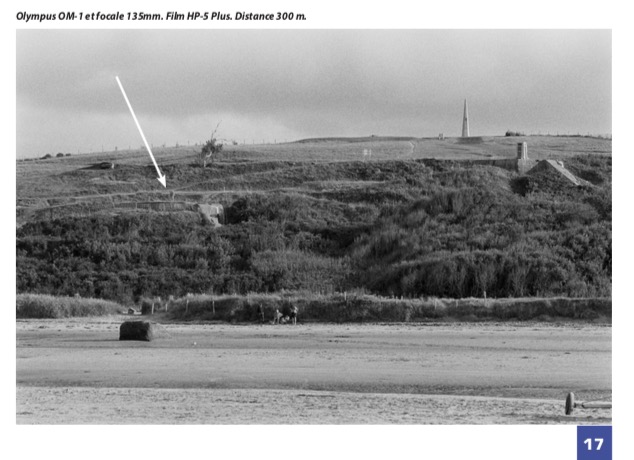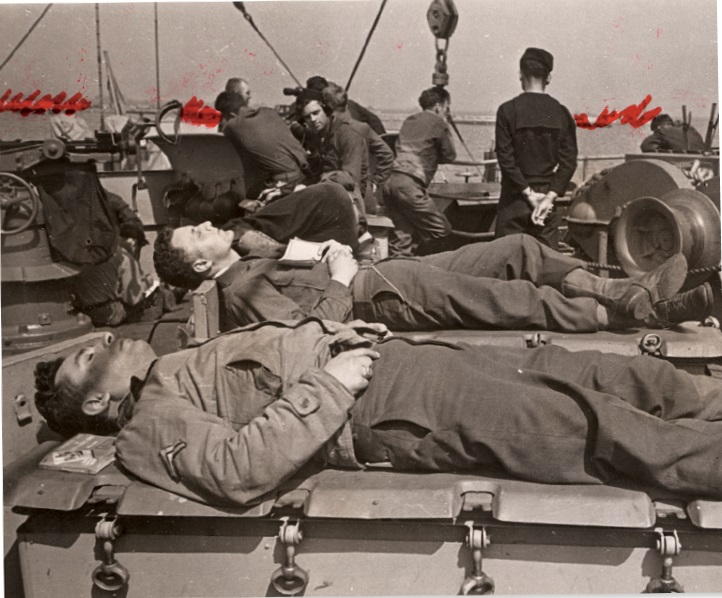 Robert Capa, Sam Fuller, and the “Cocky Nazi Officer”
Robert Capa, Sam Fuller, and the “Cocky Nazi Officer”
In August of 2020 Tristan da Cunha, a specialist in culinary photography and expert retoucher based in Lyon, France, contacted me out of the blue. He had become aware of our project and, drawn particularly to the legend of the processing disaster that supposedly destroyed most of Capa’s D-Day films, wanted to see if he could replicate that situation. He has now published the results of that experiment, about which I wrote in my previous post.
Along the way during our email correspondence about that effort, I learned that da Cunha planned a summer 2021 family-vacation trip to Omaha Beach in Normandy, in order to better understand the conditions and terrain there. It occurred to me that we could multipurpose that visit. In his 2002 autobiography A Third Face, film director Samuel Fuller, who knew Capa, recounted something that Capa had told him post-war in Hollywood, sometime in 1946:
“I asked Capa why there were only eight shots from D day [sic]. His face darkened. He told me that in all his battle experiences, he’d never seen anything as terrifying as Omaha. The exploding shells and bombs that morning were mind-boggling. With his telescopic lens, he’d focused on a German officer who was up on the bluff above the beach. The German stood with his hands on his hips, boldly barking out orders to soldiers behind him. The sight of that cocky Nazi officer, so sure of himself, was heart-stopping. Still, Capa snapped away, taking pictures of everything he could.
“Even though he was accustomed to photographing men at war, Capa told me that D day [sic] had completely flustered him. He’d managed to get off Omaha with a boatload of wounded soldiers who were ferried out to the USS Thurston. He was lucky not to have caught a bullet as well. Still, he felt as if he were fleeing. When Capa got back to Portsmouth late on June 6, he took a train to London and turned in his film for development. A darkroom assistant was so eager to see the photos that they were dried too quickly, ruining the emulsions. Those eight shots were the only ones that survived.” (P. 173)
•
Granted, this memoir got published in 2002, almost 60 years after the event and five years after Fuller’s death. Yet it gets virtually every detail of its version of Capa’s D-Day experience demonstrably, verifiably wrong. So this apocryphal, secondhand tale of the making of a conveniently vanished telephoto image struck me as improbable at best, not least because Capa’s images from the period show no regular use of a telephoto lens (indeed, no use of one at all), and Capa famously advocated not carrying unnecessary equipment.
Moreover, even had Capa made it to the “shingle” on Easy Red as he claimed in his memoir, the distances involved from there to the bluffs, as I understood them generally, made even attempting such an image unlikely. (The claim that — in the midst of the U.S. Navy’s deafening artillery attack on the German fortifications — a Nazi general would leave his position inside his bunker in order to go outside and “boldly bark out orders to soldiers behind him” is inherently laughable.) The anecdote struck me as describing a cleverly conceived cinematic moment invented by Capa to entice a young screenwriter and would-be director into considering his memoir as a viable screen treatment and possibly helping him to promote it as such.
However garbled we find Fuller’s version of what Capa told him, and no matter how far-fetched the specific detail of a “cocky German officer” seems, there’s no reason to doubt that the meeting between Capa and Fuller took place, nor that their conversation included an exchange about Capa’s D-Day experiences and the photographs he made that day. So this anecdote, usefully, serves to confirm that, as of that post-war date, Capa definitely busied himself spreading the Capa D-Day myth.
Nonetheless, it has become part of Capa D-Day lore. The late Richard Whelan parroted Fuller’s recollection uncritically in This Is War! Robert Capa at Work (2007). Furthermore, it has already infected historianship in a very different discipline. In his error-filled 2018 D-Day book Landing on the Edge of Eternity the British military historian Robert Kershaw paraphrased and quoted the Fuller narrative:
“War photographer Robert Capa, having made his way ashore and near [Technical Sergeant Calvin] Ellis, focused his telescopic camera lens on a German officer on the bluff above them, probably at WN 62. He ‘stood with his hands on his hips, boldly barking out orders to soldiers behind him,’ a depressing image he thought. ‘The sight of that cocky Nazi officer, so sure of himself, was heart stopping,’ Capa recalled.”
As I wrote in reviewing Kershaw’s book here,

Robert Kershaw, Landing on the Edge of Eternity (2018), cover
“Capa never ‘made his way ashore.’ Nor did he normally use (or even carry) a ‘telescopic camera lens.’ Furthermore, given the distances involved, such a lens — of the power available for the Contax II — would not have enabled him to observe the body language and facial expressions of anyone that far away, much less to make an exposure of anyone on top of the cliff that would be readable. Finally, Capa never spoke the words that Kershaw attributes to him with the use of quotation marks in this passage; Kershaw is paraphrasing an account given by film director Fuller of an encounter with Capa in Hollywood after the war.”
Norman Mailer coined the useful term “factoids” in his 1973 biography of Marilyn Monroe, defining the species as “facts which have no existence before appearing in a magazine or newspaper, creations which are not so much lies as a product to manipulate emotion in the Silent Majority.” Obviously, given its appearance in Kershaw’s book, the tale of Capa’s telephoto image of the German general had become such a “factoid,” and merited further consideration as such.
•

Robert Capa, “Slightly Out of Focus” (1947), cover.
Some background: At the time of this 1946 encounter between Fuller and Capa, Fuller was a moderately successful Hollywood B-movie screenwriter aspiring to become a director. Capa was in Hollywood trying it on for size, so to speak — seeing if there was a place for him in the film industry. He was procrastinating on finishing his own book, Slightly Out of Focus, which he hoped to sell to Hollywood as a treatment for a feature film. He was also the lover of Ingrid Bergman, then starring in an Alfred Hitchcock production-in-progress, Notorious.
At that moment, Fuller and Capa had a secret in common. Capa had photographed Fuller aboard the USS Samuel Chase as that Coast Guard transport set out for the Normandy coast. They had earlier become acquainted, during the campaign in Sicily. Fuller was assigned to the 16th Infantry command team of Colonel George A. Taylor as the regiment’s unofficial public affairs corporal and historian, as indicated in Whelan’s This Is War! Robert Capa at Work and confirmed here by Charles Herrick. Capa had also been delegated to Taylor’s unit for D-Day, and thus went in at approximately the same time as Fuller.
So, when they met again in Hollywood after the war, Capa knew that Fuller did not fight as an infantryman, much less go in with any early wave on D-Day. Fuller would have known the same thing about Capa. By 1946 both had separately spun the yarn that they landed with the first waves; neither was in any position to deny the other that bit of stolen valor.
•
Given their friendship, and mutual interest in film-making, it seems likely at the very least that during their meeting in Tinseltown Capa pitched his still-unwritten memoir to Fuller. The image of the telephoto picture of the German officer on the bluff is extremely cinematic, and Capa may have invented it to give Fuller (and other prospective directors) a sense of the proposed film’s visual highlights.
Evidently Fuller did not find Capa’s project worth pursuing, perhaps because he had already begun to anticipate making his own film about D-Day, The Big Red One (1980), and wanted to hold out for that as his World War II epic. Or perhaps simply because he didn’t find Capa’s outline for Slightly Out of Focus a likely prospect for a successful film.
•
With all this in mind, I asked da Cunha to answer what I thought would prove itself a simple question: From either Capa’s closest established vantage point on Easy Red (behind Armored Assault Vehicle 10 in the surf) or his closest claimed position at the “shingle,” could the photographer have seen and used a telephoto lens in an effort to make a viable, publishable image of a German officer capering on the bluffs above the beach? Since da Cunha already intended to visit the Easy Red sector of Omaha Beach, could he reproduce that situation, to the extent possible? He agreed, and the results of the experiments he conducted appear at his new website, where da Cunha has posted both his own original French version of this excellent text and a very readable English-language translation (achieved via DeepL Translate).

Tristan da Cunha, Easy Red, Omaha Beach, 2021
Da Cunha undertook this challenge with the same combination of enthusiasm, methodological rigor, attention to detail, and good humor that he brought to the larger issue of the processing of Capa’s D-Day negatives. So as not to spoil your experience of reading it with a synopsis, I’ll simply say that, in my opinion, he has answered the question definitively.
As I noted in regard to his recreation of the mythic darkroom disaster, based on his elaborate annotation of his procedures, anyone who doubts da Cunha’s results and conclusions can challenge them by running the same tests to verify and/or disprove them. Anyone who fails to do so and merely voices unfounded opinions should have zero credibility on this subject.
Though this sidebar project deals with a hypothetical situation rather than a real one, and addresses a minor issue rather than a major one, I consider it another exemplary contribution to the forensic analysis of photographic issues. Let me also point out again that, with these efforts, da Cunha has demonstrated remarkable versatility as an investigator, devising research procedures for the exploration of two radically different problems and explicating them in a lucid and engaging manner.
•
This post supported in part by a donation from Thomas Bayard.
•
 Special offer: If you want me to either continue pursuing a particular subject or give you a break and (for one post) write on a topic — my choice — other than the current main story, make a donation of $50 via the PayPal widget below, indicating your preference in a note accompanying your donation. I’ll credit you as that new post’s sponsor, and link to a website of your choosing.
Special offer: If you want me to either continue pursuing a particular subject or give you a break and (for one post) write on a topic — my choice — other than the current main story, make a donation of $50 via the PayPal widget below, indicating your preference in a note accompanying your donation. I’ll credit you as that new post’s sponsor, and link to a website of your choosing.
And, as a bonus, I’ll send you a signed copy of my new book, poetic license / poetic justice — published under my full name, Allan Douglass Coleman, which I use for my creative writing.








Leave a Comment